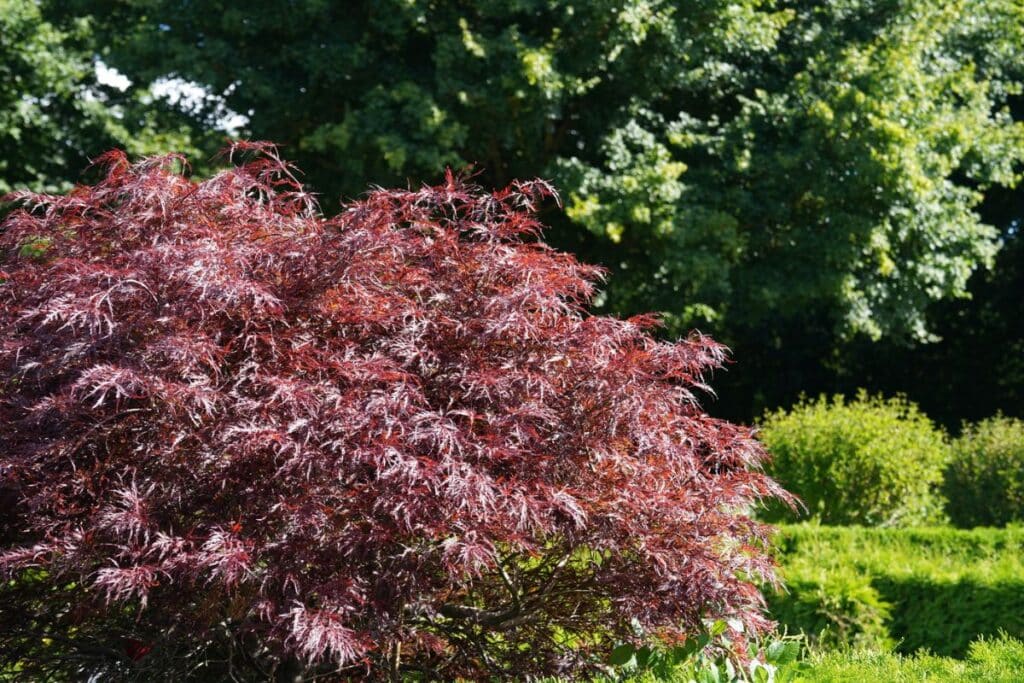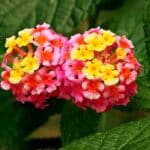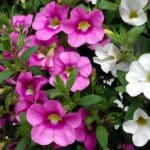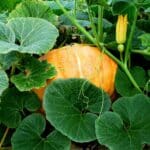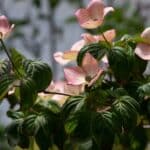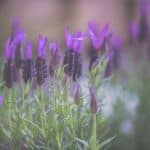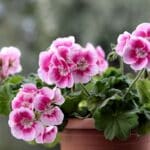Japanese maple trees (Acer palmatum) are wonderful garden editions because their attractive foliage is helpful for creating a major focal point in a garden. They are especially charming when the leaves of these deciduous trees transform from green into vibrant colors like red, orange, purple, white, or pink.
Maple trees can be paired with companion plants like ferns, ornamental grass, coral bells, dwarf conifers, woodland phlox, Japanese spurge, and wandering Jews to create a charming landscape or striking garden bed.
There are various varieties of these small trees or shrubs and some of the most popular varieties are Acer palmatum Bloodgood, Acer japonicum, and Acer pictum.
In this guide, we are going to take a closer look at these companions as well as some fantastic landscaping ideas that can help you make the most out of your garden.
What To Plant with Japanese Maple Trees
Japanese maples are quite versatile and can be planted directly in the ground, in containers or they can be used to make charming bonsai trees.
When you are selecting companion plants to grow with Japanese maples then it is always best to focus on plants that have similar growing requirements.
These colorful trees prefer organically rich, slightly acidic soil that drains well. It will adapt to most garden soils but grows especially well in loam soil types but won’t grow if you plant them in alkaline conditions.
The plants grow very well in partial shade with no more than four hours of direct sun per day but can also survive in full sun. In full sun, the leaves likely won’t create such vivid colors as in partial shade.
Japanese maple trees prefer cool soil and should be watered regularly. They also tend to grow well with lots of mulch around the base of the tree.
Let’s take a look at some good Japanese maple companion plants that can grow well in these conditions or the conditions these shrubs create underneath them.
Ornamental Grasses
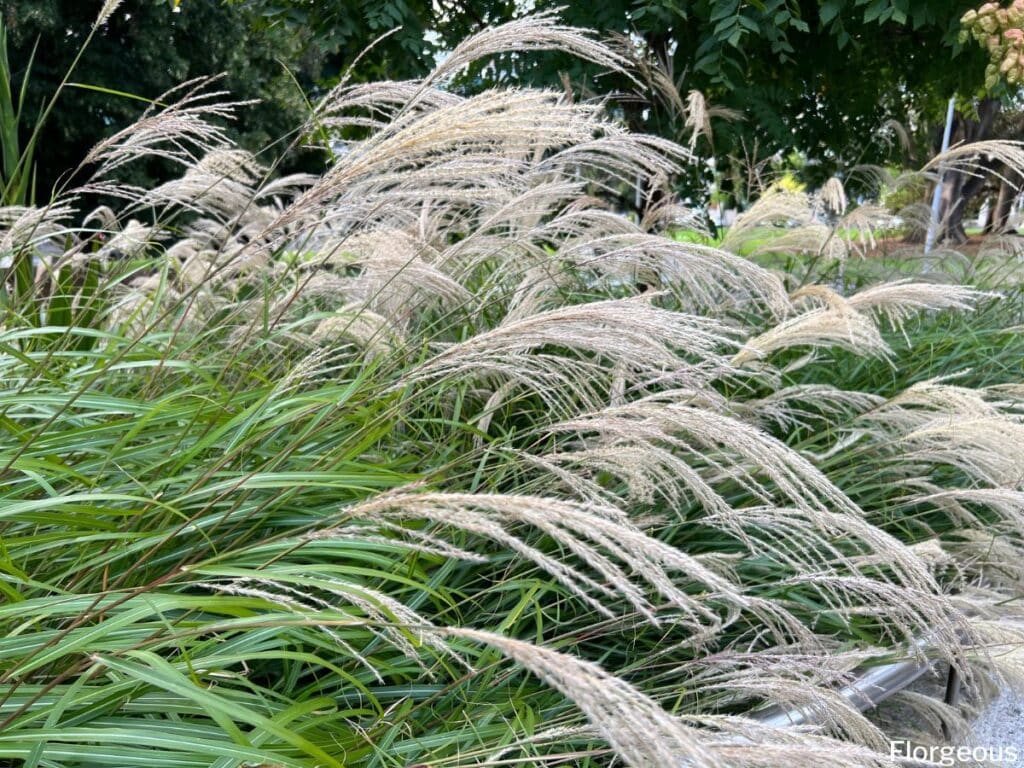
The roots of Japanese maple trees should be protected from heat by adding a layer of mulch over the top of the soil. As an alternative, you can also use ornamental grasses as a ground cover to keep the soil nourished and moist.
When looking for what to grow under Japanese maple trees, you can’t go wrong with ornamental grasses.
The small tree will create lots of shade around its base which means it is best to focus on ornamental grasses like Hakone grass (Hakonchloa macra), or mondo grass (Ophiopogon japonicus) that prefer shaded conditions.
These perennial grass varieties will grow well in the shade created by the maple tree and also grow well in ordinary garden soil types that drain well.
You can plant mondo grass or Japanese forest grass all around the base of your maples.
The light green foliage of Hakone grass is great for brightening up these shade areas while a variety like black mondo grass can help create lots of contrast so your maple tree will stand out even more.
Coral Bells
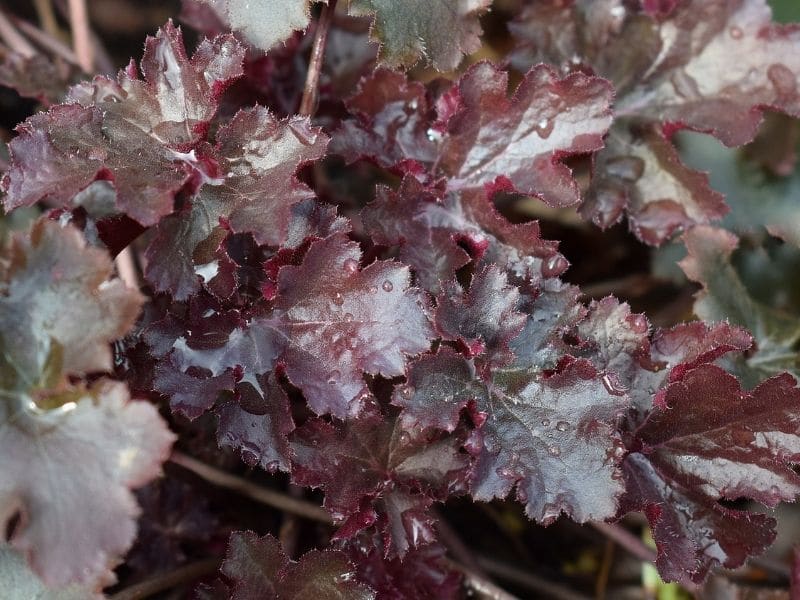
Coral bells (Heuchera spp.) can also be terrific ground covers to grow around the base of your Japanese maples.
There are many varieties of these beautiful foliage plants and their leaves can be brown, green, pink, purple, white, rust-colored, or lime green. These vivid colors are terrific for creating lots of contrast underneath your colorful Japanese maple tree.
Coral bells can also produce flowers on tall spikes but these flowers are not very striking and most gardeners snip them off so the plants can divert all their energy to the vivid leaves.
These low-maintenance plants will grow very well in the shade conditions created by the Japanese maple and they flourish in moist soil that drains well.
You can grow this delicate foliage in masses around the base of your maple tree to keep the soil moist or combine it with other plants like ornamental grasses to add elegance and texture to your garden.
Dwarf Conifers
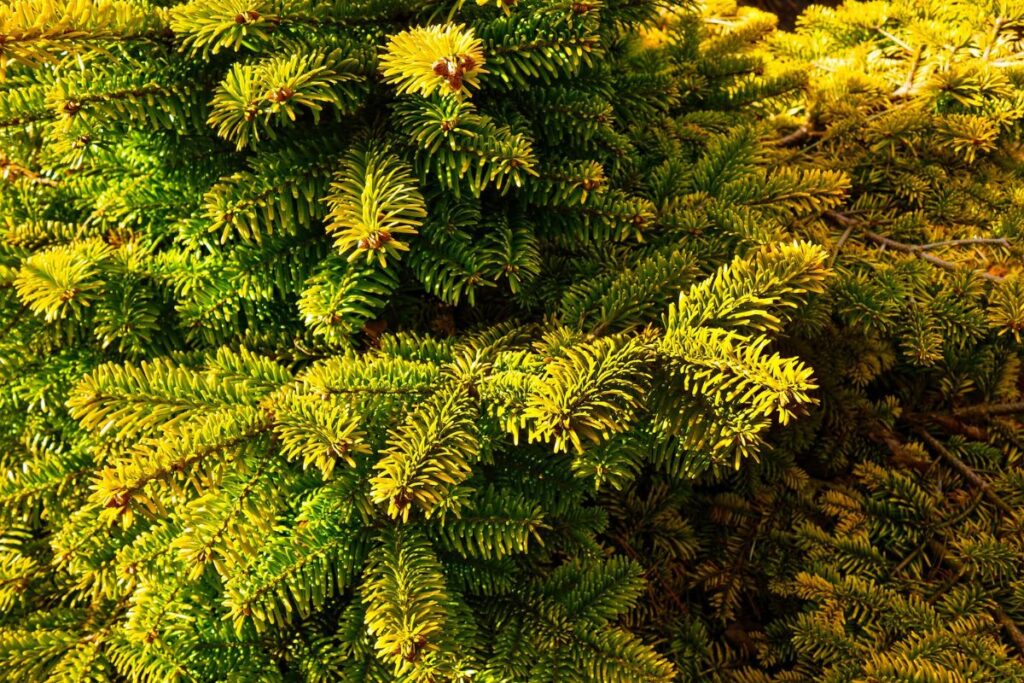
Dwarf conifers (Picea pungens) are great plants to consider if you want to combine shrubs or small trees to form a mixed border or hedge on your property.
These companion shrubs will add lots of texture to your garden with their interesting leaves and beautiful bright green colors. They will also add winter interest because the evergreen foliage will keep your garden nice and lush during the colder months when Japanese maples lose their leaves.
Conifers grow very well in full sun and adapt well to most soil types as long as the soil drains well. In warmer regions, it is best to plant them in an area where they will receive lots of early morning sun with afternoon shade.
These shrubs will only grow up to six feet tall and should be paired with shorter varieties of Japanese maples or they might not get enough sunlight to flourish. For added winter interest, you can pair them with coral bark maple because the showy red stems of this maple tree will look especially striking next to conifers.
Woodland Phlox
Woodland phlox (Phlox divaricata), also known as blue phlox or wild sweet William, is a type of wildflower that can add lots of color to your garden with its showy blue flowers.
This creeping perennial grows very well in partial shade and will flourish in the moist, well-drained soil that Japanese maples require. In cooler climates, you can also grow this ground cover in direct sun.
These bushy plants can be planted underneath your Japanese maple trees because they only grow up to 12 inches tall and will gradually spread all over the garden bed to form a thick foliage carpet with lots of fragrant flowers.
Japanese Spurge
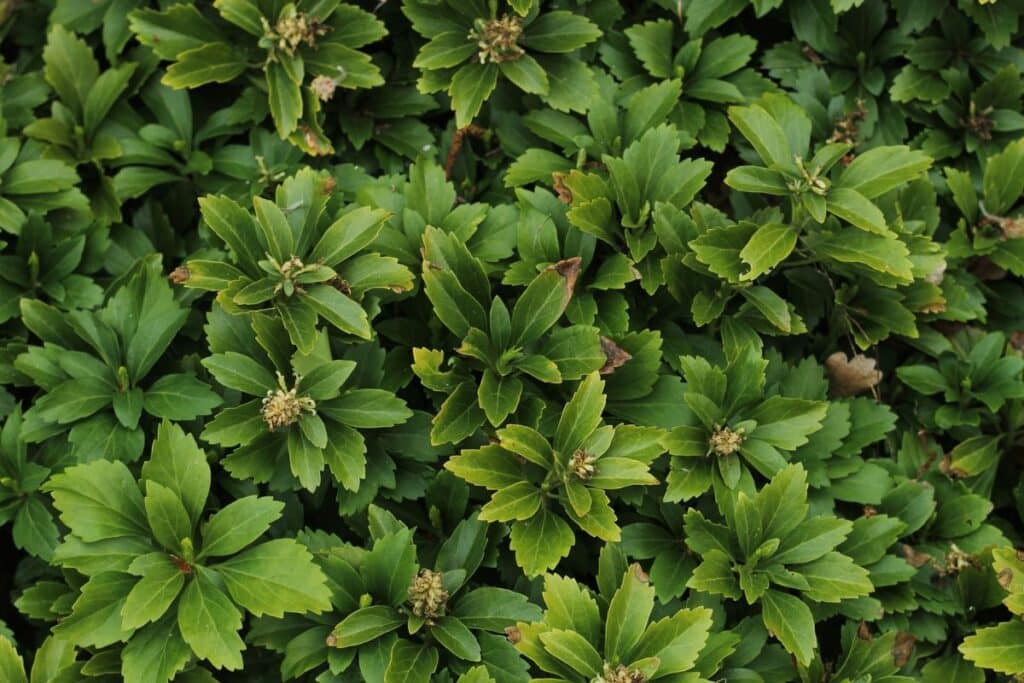
Japanese spurge (Pachysandra terminalis) is also terrific ground cover to pair with Japanese maples because their light green leaves will lighten up these shady spots. They will also add lots of interest when the tiny spikes of white flowers start to appear in early spring.
This foliage plant grows well in acidic soils and should be kept damp or they can wilt. They also grow their best in partial to full shade.
These shade-tolerant plants are very easy to maintain because they spread via underground runners. They will gradually spread all over your garden bed to form a thick layer of natural mulch.
Wandering Jew
Wandering Jews (Tradescantia zebrina) are creeping plants that can look charming as a living mulch underneath your Japanese maple trees. They are also often used in containers to create a waterfall effect because the wandering vine plant will spill over the edge of the container for a very interesting effect.
This plant with its purple leaves is very easy to grow since you can plant it from cuttings. It should be planted in well-drained soil and it will flourish in indirect light but can become scorched in direct sun. In deep shade, the vibrant color of the foliage will also become faded.
The best way to pair wandering jew with Japanese maple is by growing it around the base of the tree where it will receive lots of dappled shade.
Ferns
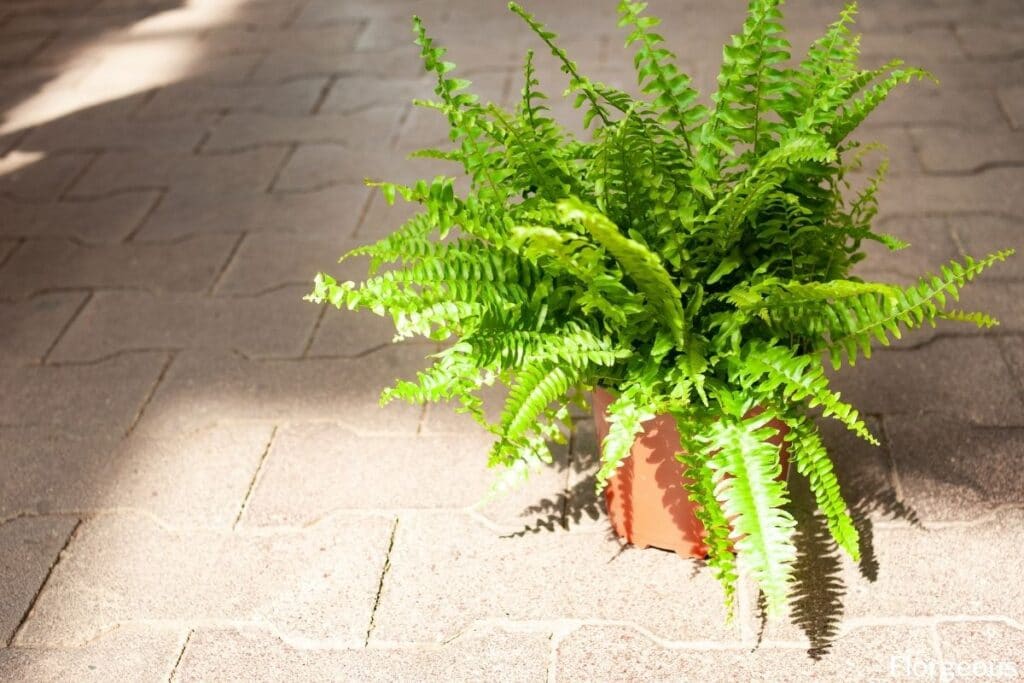
You can also pair Japanese maples with most fern species. Shorter Japanese maple trees will add lots of interest alongside ferns in shaded areas while taller maple tree species can create ideal growing conditions in sunny areas because ferns will flourish in the shade provided by these small trees.
You can pair Japanese maple trees with all sorts of bright green fern species like ostrich ferns (Matteuccia struthiopteris) or lady fern (Athyrium felix-femina).
Japanese maples can also be paired with colorful ferns like Japanese painted fern (Athyrium niponicum) with purple leaves or Autumn fern (Dryopteris erythrosora) with coppery-red leaves if you want to add more color to your garden.
Most fern species need dappled shade because they will scorch in direct sunlight. These plants also prefer moist cool soils.
For an ideal effect, you can grow ferns with other ground cover plants around the base of your maple tree. The maple tree will look rather striking in a texture-rich garden bed filled with different plant species.
What NOT to Plant with Japanese Maple Trees
Japanese maple trees love full sun but they can create quite a bit of shade underneath them.
It is best not to grow sun-dependent plants like lemon thyme directly underneath the small trees because these plants won’t receive enough sunlight and, as such, might not produce any fragrant flowers.
If you are going to pair Japanese maple trees with a sun-dependent ground cover plant then it is best not to position them directly underneath the maple tree or to grow them on a side where they will receive lots of direct sunlight.
Landscape ideas for Japanese Maple and Companions
Now that you know more about the best companion shrubs and plants to pair with Japanese maple trees, it is time to discover creative ways to use these plants and their companions in your garden. Here is a quick look at a couple of landscaping ideas that are bound to look striking.
Mixed Containers
Japanese maples grow very well in containers. If you want to create striking mixed containers then you should position a vibrant dwarf Japanese maple in a large container as a thriller plant.
Next, you can add some filler plants like ornamental grasses around the base of the tree. Your mixed container will also look quite impressive if you let a wandering plant such as a wandering jew trail over the edge of the mixed container.
You can learn more about growing Japanese maple bonsai in container on our blog.
Contrasting Colors
Japanese maple trees will stand out a lot more if you grow them with plants that can form a striking contrast with these small trees.
The contrast might not be as noticeable throughout the year because the leaves of these small trees can vary for different seasons. The main idea is to focus on a time like spring when these leaves are purple-red or fall when the leaves turn bright crimson.
Now find plants that are in stark contrast to these colors. A lime green plant like Japanese forest grass or Japanese spurge underneath the tree is bound to make these trees stand out.
Play With Interesting Colors
You can also pair Japanese maple trees with other plants with interesting colors other than just green.
A vivid shrub paired with something purple like Japanese painted fern or purple coral bells will create a very interesting garden bed.
Create Mixed Borders
You can pair dwarf Japanese maple trees with other short shrub plants like conifers, weigelas, or elderberries to create charming mixed borders. These living walls are great for dividing gardens or can be useful privacy screens.
FAQs
What is the best planting mix for Japanese maples?
For Japanese maples, use a well-draining planting mix that includes a combination of acidic soil, organic matter, and perlite or sand for good aeration. A mix specifically formulated for acid-loving plants can help create an optimal growing environment for these trees.
What is the life expectancy of a Japanese maple tree?
Japanese maple trees (Acer palmatum) can have a life expectancy of several decades to well over a century, depending on the variety, growing conditions, and care provided. With proper maintenance and a suitable environment, many Japanese maples can thrive for 50 years or more.
Where should Japanese maples be planted?
Plant Japanese maples in locations with well-draining soil, preferably rich in organic matter, and provide them with partial shade. Protect them from harsh afternoon sunlight, especially in hotter climates, to prevent leaf scorch and maintain their vibrant foliage.
Final Thoughts
Japanese maples are great trees or shrubs for anyone who loves a colorful garden. These flexible plants will look their absolute best if you pair them with other shrubs like conifers or ferns. You can also pair them with showy ground covers like wandering Jews, Japanese spurge, woodland phlox, coral bells, or ornamental grass.
We hope that you enjoyed this article and we are certain that any of these combinations of plants will help you grow a successful and very appealing garden.
*image by Sujitto/depositphotos

